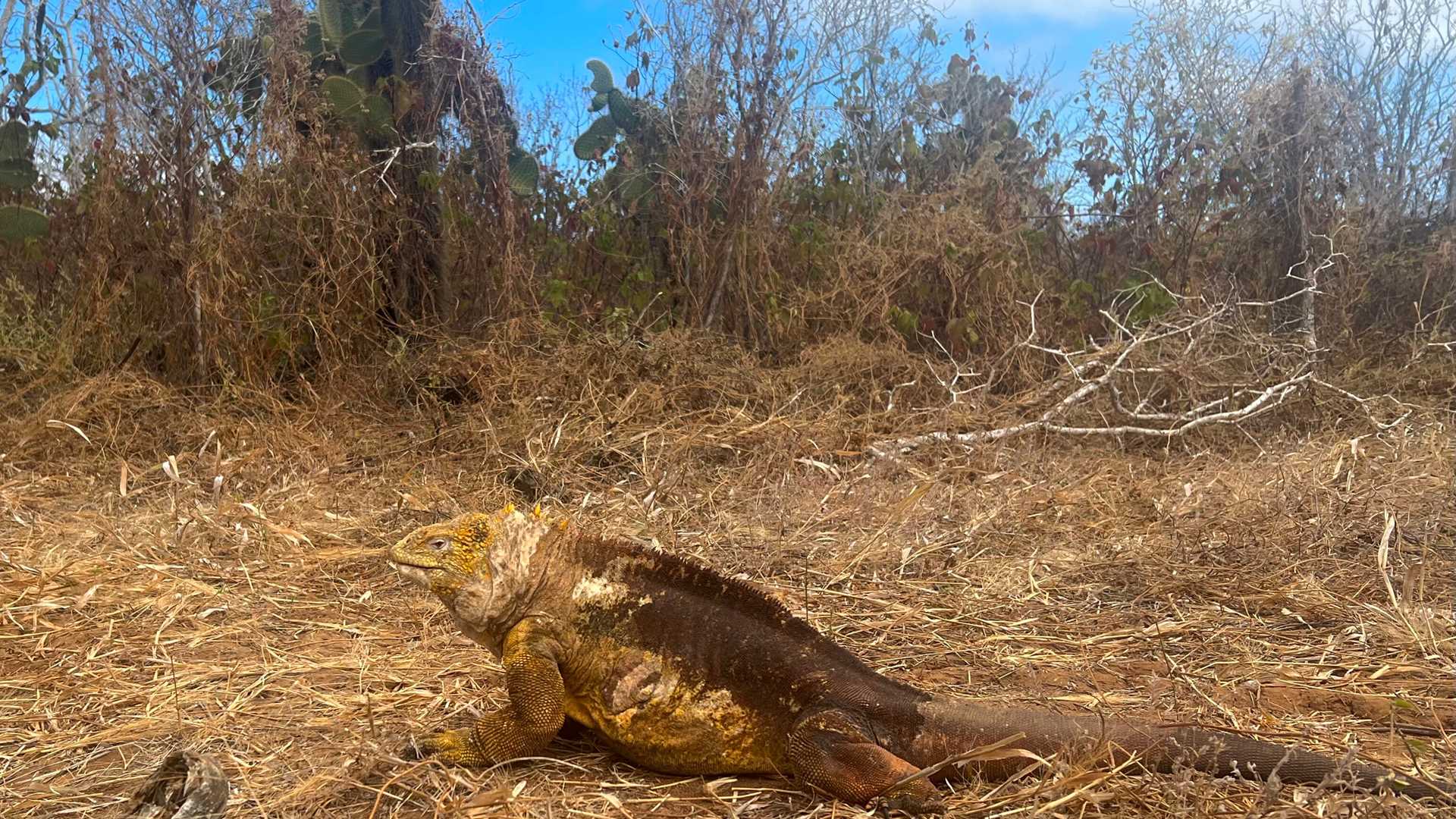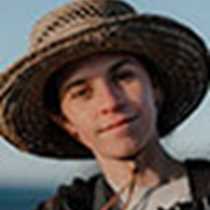Today we explored the western part of Santa Cruz Island to find dragons. Galapagos is known for its endemic reptiles, and the last one we needed to find for our species checklist was the Galapagos land iguana, a yellow reptile with an intimidating gaze that lives in burrows and basks in the sun on many of the islands. A good place to find them is the western part of Santa Cruz at a site called Dragon Hill. This is a restored area of the national park. In Santa Cruz, we have a large human population. The area used to have a lot of introduced species, but they were locally eradicated. Iguanas bred in the research station were returned to the wild. During our hike in this dry forest, we encountered quite a few. We observed some iguanas engaged in mating behavior, which consists of a slow chase by the males with the females walking away from them. Land iguanas are a sister species of marine iguanas, but they have very different habitats and behavior. It was interesting to see their burrows and habitats. As the day warmed up, it was time to go to the water. For the rest of the morning, we snorkeled. Our hotel department offered an Ecuadorian lunch, so we got to taste many of the dishes that are part of the diverse Ecuadorian cuisine.
For the afternoon, we enjoyed exploring the mangrove forest of Borrero Bay. Some guests took a Zodiac ride with naturalists who explain the benefits of this ecosystem to our planet. Other guests kayaked or paddleboarded peacefully. There was even a Zodiac driving lesson for the kids! We a had a lot of fun looking for baby sharks, rays, and turtles in the area. We finished our day with a wine tasting event on the sun deck while circumnavigating Daphne Mayor at sunset, which is a site of scientific interest.







